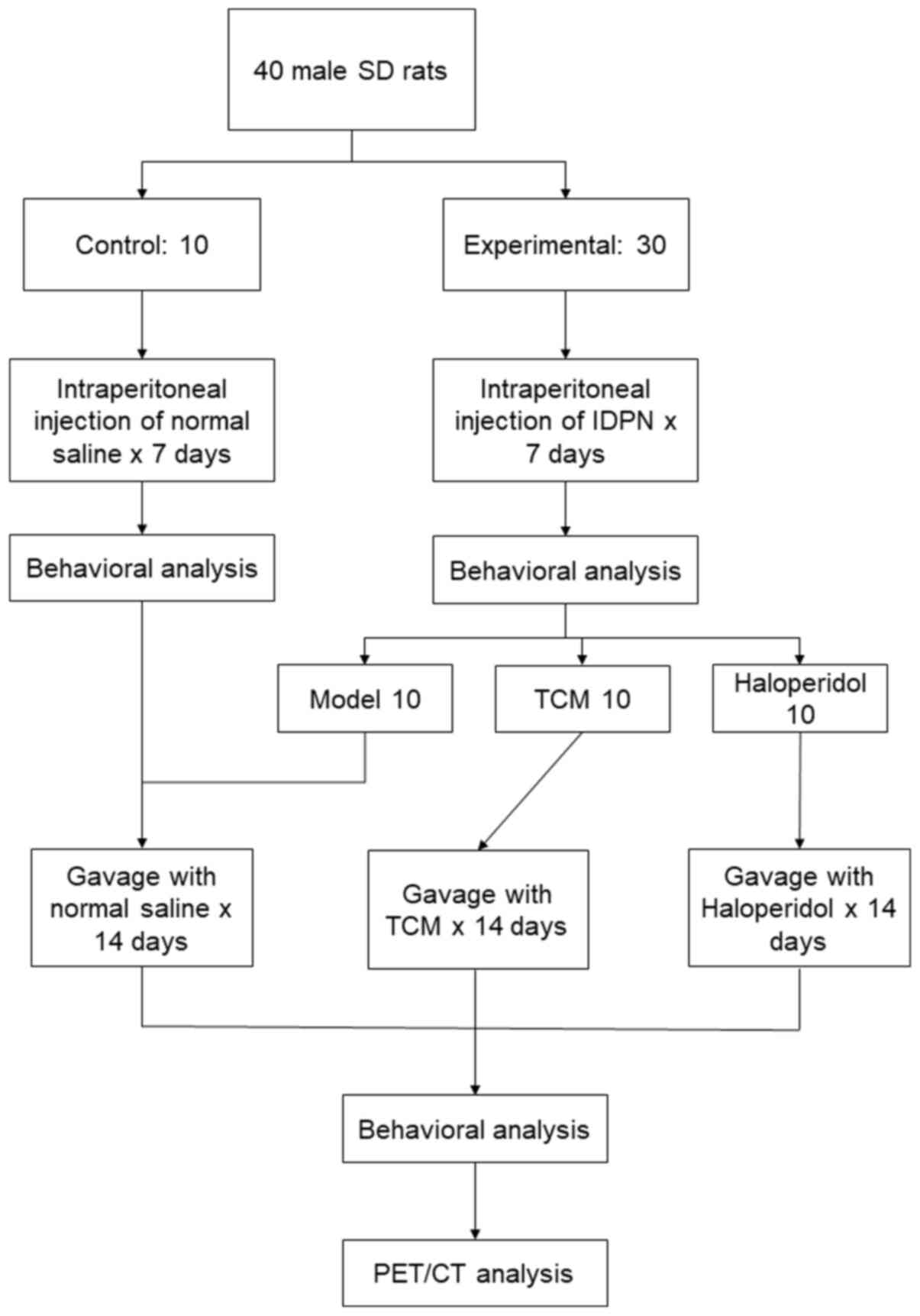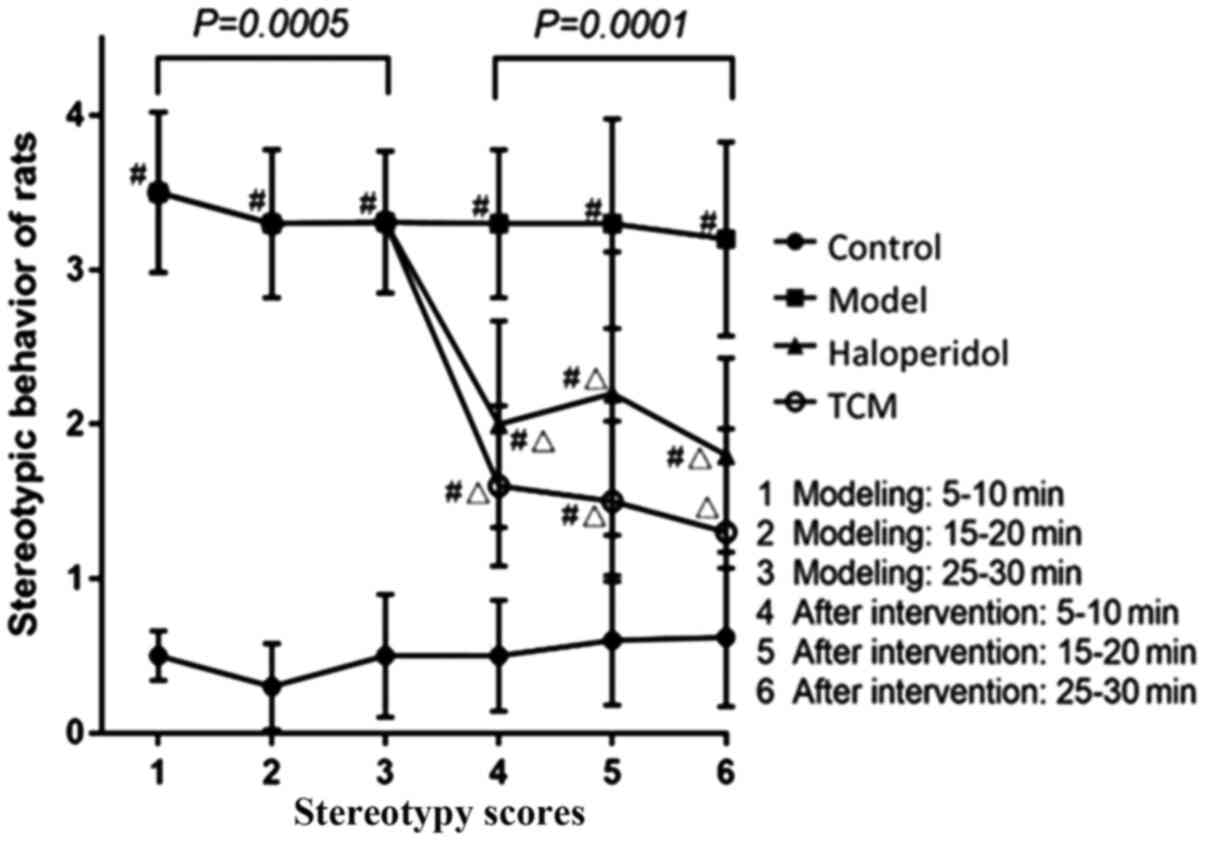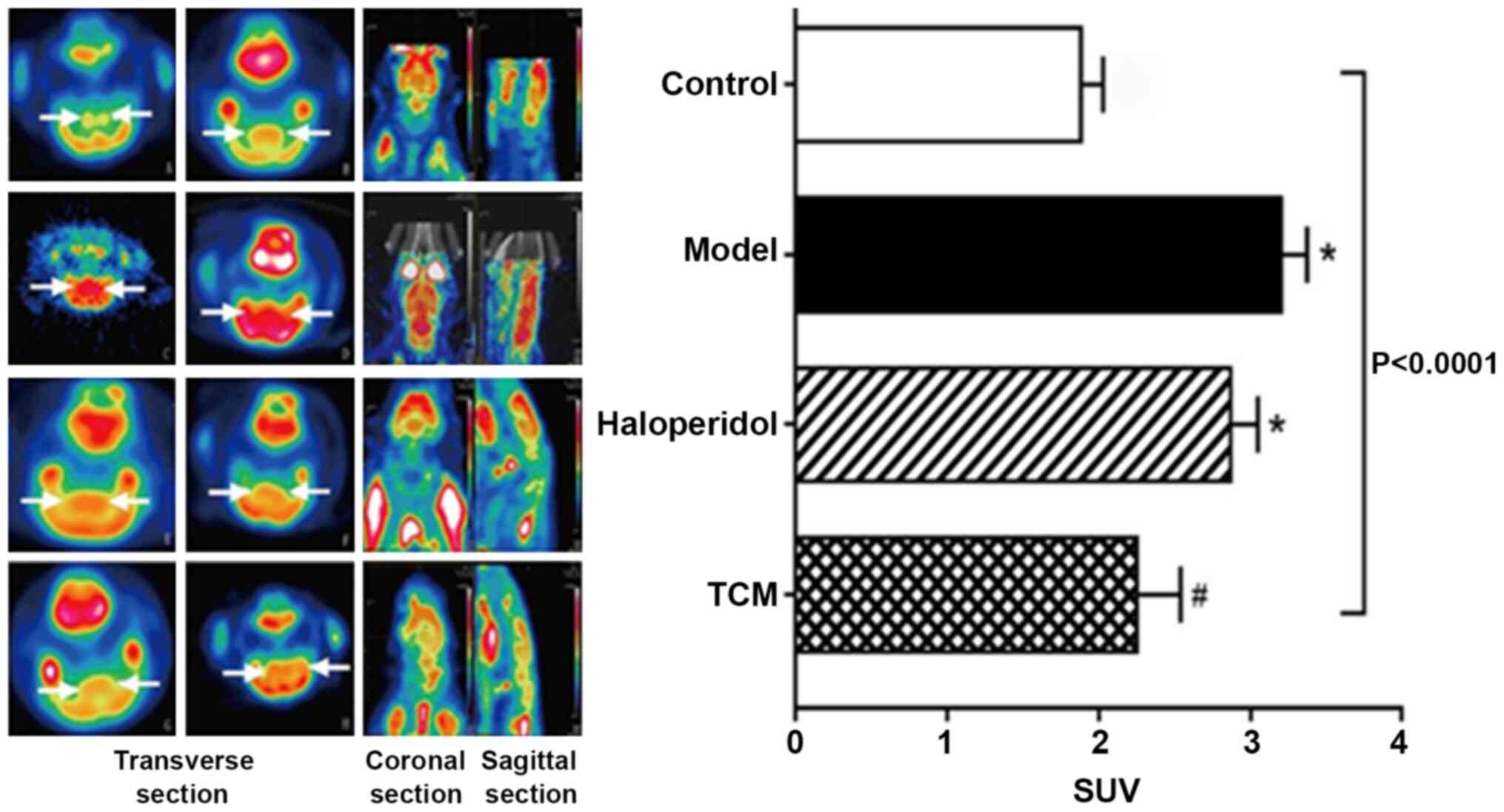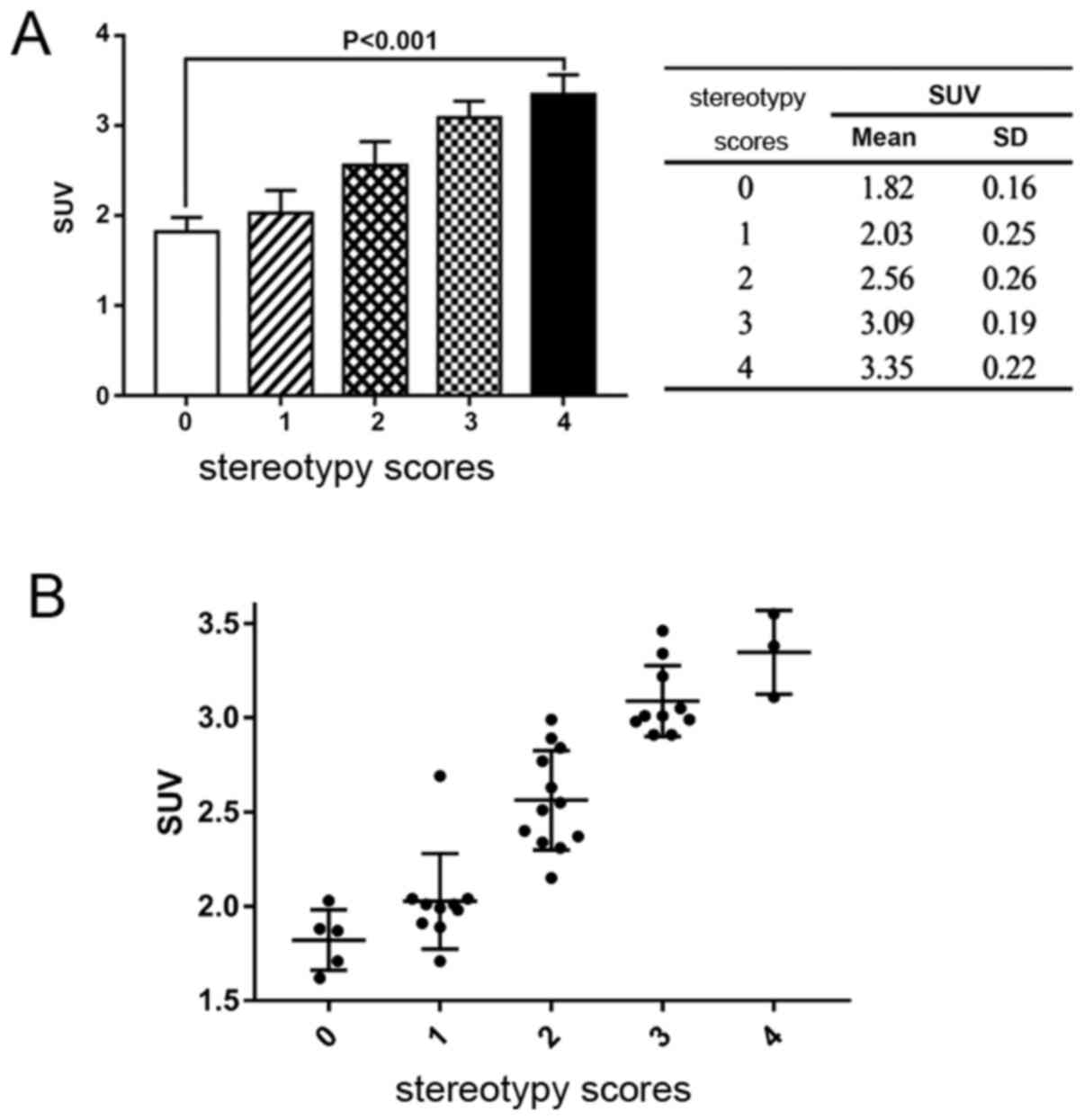|
1
|
Steeves T, McKinlay BD, Gorman D,
Billinghurst L, Day L, Carroll A, Dion Y, Doja A, Luscombe S,
Sandor P and Pringsheim T: Canadian guidelines for the
evidence-based treatment of tic disorders: Behavioural therapy,
deep brain stimulation, and transcranial magnetic stimulation. Can
J Psychiatry. 57:144–151. 2012.PubMed/NCBI View Article : Google Scholar
|
|
2
|
Roessner V, Plessen KJ, Rothenberger A,
Ludolph AG, Rizzo R, Skov L, Strand G, Stern JS, Termine C and
Hoekstra PJ: ESSTS Guidelines Group. European clinical guidelines
for Tourette syndrome and other tic disorders. Part II:
Pharmacological treatment. Eur Child Adolesc Psychiatry.
20:173–196. 2011.PubMed/NCBI View Article : Google Scholar
|
|
3
|
Yang C, Zhang L, Zhu P, Zhu C and Guo Q:
The prevalence of tic disorders for children in China: A systematic
review and meta-analysis. Medicine. 95(e4354)2016.PubMed/NCBI View Article : Google Scholar
|
|
4
|
Abramovitch A, Reese H, Woods DW, Peterson
A, Deckersbach T, Piacentini J, Scahill L and Wilhelm S:
Psychometric properties of a self-report instrument for the
assessment of tic severity in adults with tic disorders. Behav
Ther. 46:786–796. 2015.PubMed/NCBI View Article : Google Scholar
|
|
5
|
Martino D, Pringsheim TM, Cavanna AE,
Colosimo C, Hartmann A, Leckman JF, Luo S, Munchau A, Goetz CG,
Stebbins GT, et al: Systematic review of severity scales and
screening instruments for tics: Critique and recommendations. Mov
Disord. 32:467–473. 2017.PubMed/NCBI View Article : Google Scholar
|
|
6
|
Rapanelli M, Frick L, Pogorelov V, Ohtsu
H, Bito H and Pittenger C: Histamine H3R receptor activation in the
dorsal striatum triggers stereotypies in a mouse model of tic
disorders. Transl Psychiatry. 7(e1013)2017.PubMed/NCBI View Article : Google Scholar
|
|
7
|
Vinner E, Israelashvili M and Bar-Gad I:
Prolonged striatal disinhibition as a chronic animal model of tic
disorders. J Neurosci Methods. 292:20–29. 2017.PubMed/NCBI View Article : Google Scholar
|
|
8
|
Ding L, Yang Z, Liu G, Ran N, Yi M, Li H,
Zhao H, Tang L, Cheng H, Zhao J, et al: Safety and efficacy of
taurine as an add-on treatment for tics in youngsters. Eur J
Neurol. 27:490–497. 2020.PubMed/NCBI View Article : Google Scholar
|
|
9
|
Gerstner W: Time structure of the activity
in neural network models. Phys Rev E Stat Phys Plasmas Fluids Relat
Interdiscip Topics. 51:738–758. 1995.PubMed/NCBI View Article : Google Scholar
|
|
10
|
Zhao L, Qi F, Zhang F, Wang Z, Mu L, Wang
Y, En Q, Li J, Du Y and Li A: Dual regulating effect of Ningdong
granule on extracellular dopamine content of two kinds of
Tourette's syndrome rat models. Biosci Trends. 9:245–251.
2015.PubMed/NCBI View Article : Google Scholar
|
|
11
|
Wang Y, Li M, Liang Y, Yang Y, Liu Z, Yao
K, Chen Z and Zhai S: Chinese herbal medicine for the treatment of
depression: Applications, efficacies and mechanisms. Curr Pharm
Des. 23:5180–5190. 2017.PubMed/NCBI View Article : Google Scholar
|
|
12
|
Braun AR, Stoetter B, Randolph C, Hsiao
JK, Vladar K, Gernert J, Carson RE, Herscovitch P and Chase TN: The
functional neuroanatomy of Tourette's syndrome: An FDG-PET study.
I. Regional changes in cerebral glucose metabolism differentiating
patients and controls. Neuropsychopharmacology. 9:277–291.
1993.PubMed/NCBI View Article : Google Scholar
|
|
13
|
Jeffries KJ, Schooler C, Schoenbach C,
Herscovitch P, Chase TN and Braun AR: The functional neuroanatomy
of Tourette's syndrome: An FDG PET study III: Functional coupling
of regional cerebral metabolic rates. Neuropsychopharmacology.
27:92–104. 2002.PubMed/NCBI View Article : Google Scholar
|
|
14
|
Sun LY, Li QP, Zhao LL and Ding YQ:
Traditional Chinese medicine inheritance system analysis of
professor Ding Yuanqing in treating tic disorder medication based
on experience. Zhongguo Zhong Yao Za Zhi. 40:3314–3318.
2015.PubMed/NCBI(In Chinese).
|
|
15
|
Schiffer WK, Mirrione MM, Biegon A,
Alexoff DL, Patel V and Dewey SL: Serial microPET measures of the
metabolic reaction to a microdialysis probe implant. J Neurosci
Methods. 155:272–284. 2006.PubMed/NCBI View Article : Google Scholar
|
|
16
|
Godar SC, Mosher LJ, Di Giovanni G and
Bortolato M: Animal models of tic disorders: A translational
perspective. J Neurosci Methods. 238:54–69. 2014.PubMed/NCBI View Article : Google Scholar
|
|
17
|
Martino D, Ganos C and Pringsheim TM:
Tourette syndrome and chronic Tic disorders: The clinical spectrum
beyond Tics. Int Rev Neurobiol. 134:1461–1490. 2017.PubMed/NCBI View Article : Google Scholar
|
|
18
|
Verdellen C, van de Griendt J, Hartmann A
and Murphy T: ESSTS Guidelines Group. European clinical guidelines
for Tourette syndrome and other tic disorders. Part III:
Behavioural and psychosocial interventions. Eur Child Adolesc
Psychiatry. 20:197–207. 2011.PubMed/NCBI View Article : Google Scholar
|
|
19
|
Leckman JF, Riddle MA, Hardin MT, Ort SI,
Swartz KL, Stevenson J and Cohen DJ: The Yale Global Tic severity
scale: Initial testing of a clinician-rated scale of tic severity.
J Am Acad Child Adolesc Psychiatry. 28:566–573. 1989.PubMed/NCBI View Article : Google Scholar
|
|
20
|
Walkup JT, Rosenberg LA, Brown J and
Singer HS: The validity of instruments measuring tic severity in
Tourette's syndrome. J Am Acad Child Adolesc Psychiatry.
31:472–477. 1992.PubMed/NCBI View Article : Google Scholar
|
|
21
|
Qi Y, Zheng Y, Li Z, Liu Z and Xiong L:
Genetic studies of Tic disorders and Tourette syndrome. Methods Mol
Biol. 2011:547–571. 2019.PubMed/NCBI View Article : Google Scholar
|
|
22
|
Singer HS, Hahn IH and Moran TH: Abnormal
dopamine uptake sites in postmortem striatum from patients with
Tourette's syndrome. Ann Neurol. 30:558–562. 1991.PubMed/NCBI View Article : Google Scholar
|
|
23
|
Makki MI, Behen M, Bhatt A, Wilson B and
Chugani HT: Microstructural abnormalities of striatum and thalamus
in children with Tourette syndrome. Mov Disord. 23:2349–2356.
2008.PubMed/NCBI View Article : Google Scholar
|
|
24
|
Lennington JB, Coppola G, Kataoka-Sasaki
Y, Fernandez TV, Palejev D, Li Y, Huttner A, Pletikos M, Sestan N,
Leckman JF and Vaccarino FM: Transcriptome analysis of the human
striatum in Tourette syndrome. Biol Psychiatry. 79:372–382.
2016.PubMed/NCBI View Article : Google Scholar
|
|
25
|
Chugani HT: Imaging brain metabolism in
the newborn. J Child Neurol. 33:851–860. 2018.PubMed/NCBI View Article : Google Scholar
|


















